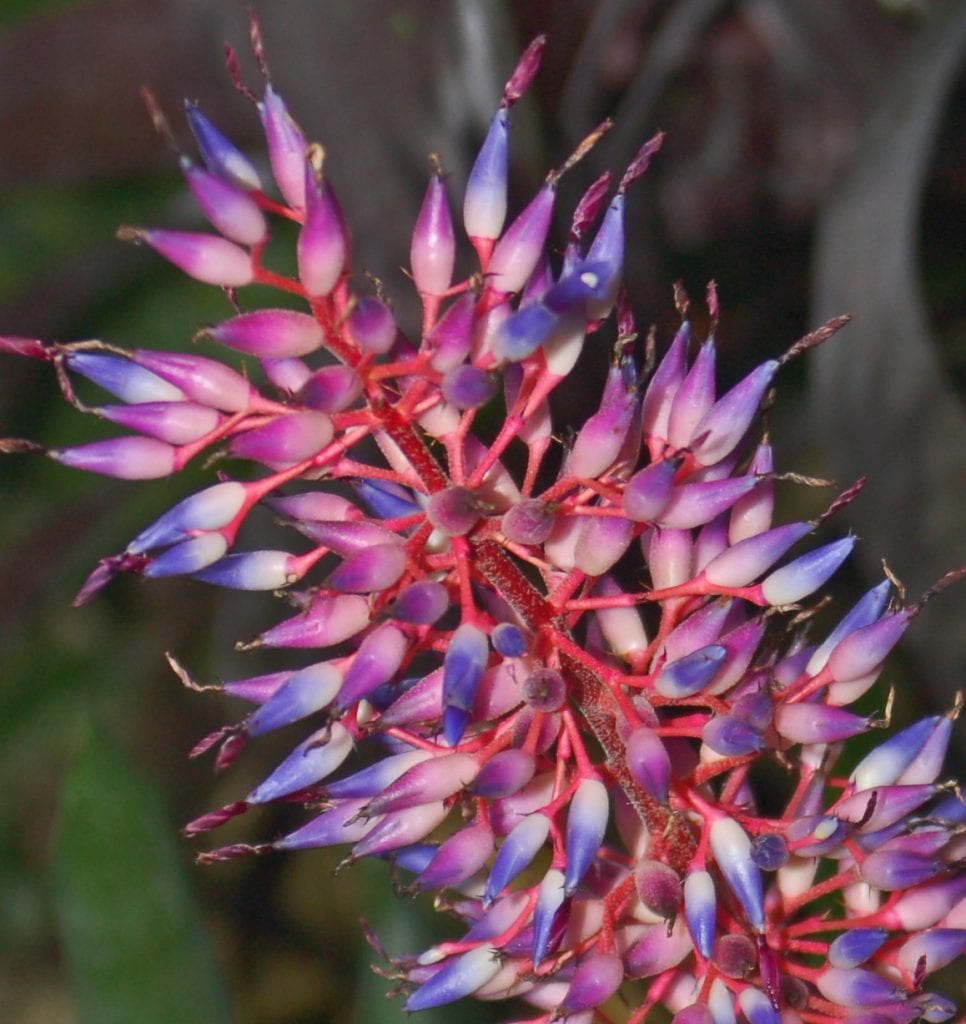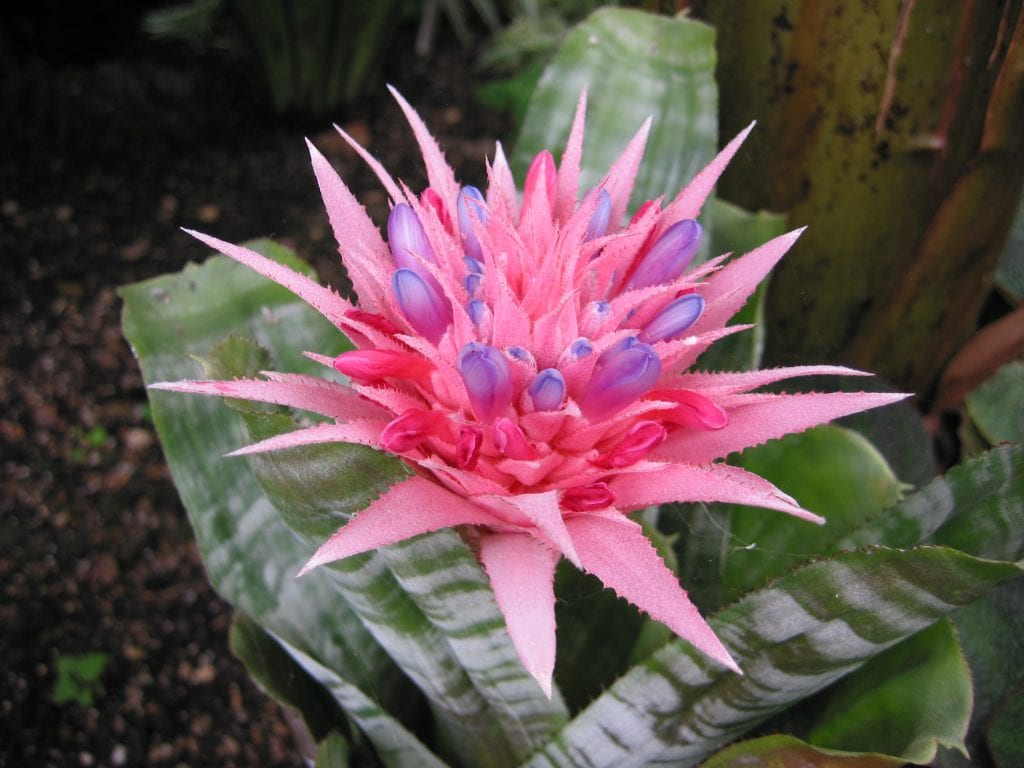
Aechmea fendleri
Bromeliads are one of the most beautiful plants that can be used to fill with pleasure those corners that have been left empty in the garden or to decorate the interior of homes. They are very showy plants, with some flowers grouped in inflorescences of cheerful colors, very showy, especially those of the Aechmea.
These plants are exceptional. They are not only easy to grow but also have very decorative inflorescences. Do you want to know them?
Characteristics of the Aechmea
Our protagonists are bromeliads originating from Mexico to southern South America. The botanical genus to which they belong, Aechmea, comprises 268 accepted species epiphytic or terrestrial, hermaphroditic or dioecious. Its leaves are rosette, with serrated edges. The flowers appear in simple or compound inflorescences, finger or pinnate, and are very brightly colored. (pink, soft lilac, red, yellow). The fruit is a berry inside which are the seeds.
Its cultivation, as we mentioned, is not complicated.
How are they cared for?

Aechmea fasciata
If you want to have one or more specimens, follow our advice and show off plants:
- Location: place your bromeliad in an area where it is protected from frost and direct sun. In the event that you want to have it inside your home, put it in a room where a lot of natural light enters.
- Soil or substrateRegardless of where you plant it, whether in the garden or in a new pot, the soil must have good drainage.
- Irrigation: water your plant every time you see that in the center of each rosette there is almost no water left. Pour the precious liquid in the center. Use lime-free water.
- Subscriber: during spring and summer it is highly recommended to use liquid fertilizers, following the indications specified on the packaging.
- Planting / Transplant time: in spring.
- Multiplication: the most recommended method because it is simple is by separating suckers in spring-summer. They are extracted with a little root, and planted in pots with vermiculite.
- Rusticity: it does not support cold or frost.
Enjoy your plant.
I really liked the article, I did not know the plant and I see that it is beautiful. Thanks
Thanks to you, Alicia.
I have 2 aechmeas in some small flowerpots, it is very tight there and it has little children but it is summer and I do not know what to do because the tips of the leaves are drying
Hello Fernanda.
If you see that they are too tight you can move them to a larger pot now without problem. Of course, it is important that the roots are not manipulated a lot; that is, you have to remove them from the pot carefully and plant them as quickly as possible to another. Here you have information on how a plant is transplanted.
Greetings.